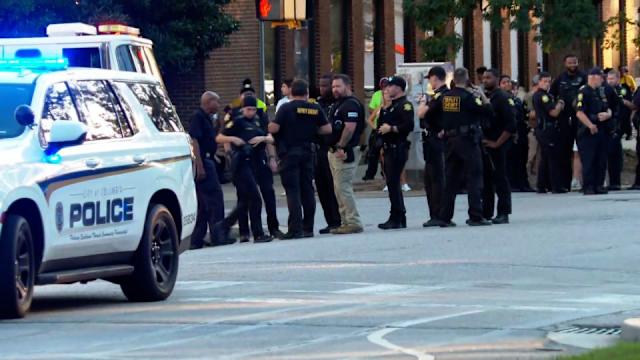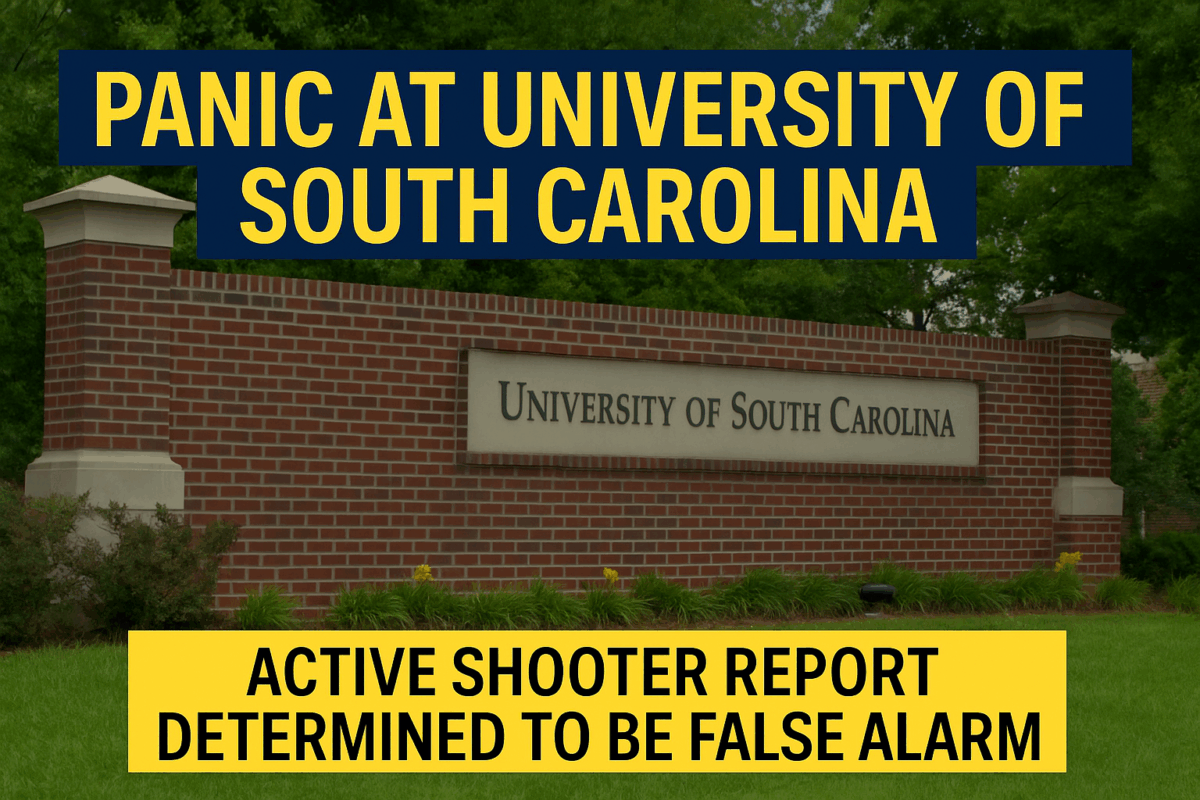Emergency Alert Sparks Fear
On Sunday evening, students and faculty at the University of South Carolina in Columbia received a terrifying Carolina Alert message. The alert warned of an active shooter near the Thomas Cooper Library and instructed everyone to shelter in place or evacuate immediately if safe to do so. Within minutes, the campus atmosphere shifted from calm to chaos as many feared the worst.
Swift Police Response
Law enforcement officers rushed to the scene after the emergency alert was issued. Police secured the library area and began investigating reports of a possible gunman. For nearly an hour, tension gripped the campus. Students barricaded themselves inside classrooms, dorms, and offices. Others ran to safer locations, following the instructions that had been broadcast across campus.
Despite the initial panic, police found no evidence of shots fired or any armed individual on campus. By approximately 8:00 PM, the university issued an all-clear notice, assuring the community that no threat remained.

Injuries From Panic, Not Violence
Although no gunfire occurred, the incident still caused injuries. Two individuals were reported hurt during the rush to safety, though their wounds were described as minor. These injuries reflected the fear and confusion that swept through the campus rather than any violent action by a shooter.
The Source of the Scare
Authorities later indicated that the scare may have been triggered by a misinterpretation. A widely shared video showed a person carrying an umbrella, which some mistook for a firearm. On social media, the clip went viral and intensified the sense of danger. This false assumption spread rapidly, underscoring how quickly misinformation can escalate a crisis.
Growing Concern Over False Alarms
The University of South Carolina incident was not unique. In recent months, several universities, including Villanova and the University of Tennessee at Chattanooga, have experienced similar false alarms. These events highlight the delicate balance between safety and panic. While swift alerts are vital to protect lives, unconfirmed reports can create unnecessary fear and disruption.
Student Reactions
Many students expressed shock at how quickly the situation unfolded. Some said they felt helpless as rumors spread faster than official updates. Others were thankful that the alert system worked, even if it turned out to be a false alarm. “I’d rather the university overreact than underreact,” one student remarked, emphasizing that safety must remain the top priority.
Lessons Learned
The event serves as a reminder of the importance of emergency preparedness, communication, and media responsibility. Universities across the United States face increasing pressure to respond instantly to potential threats. However, the challenge lies in verifying information before triggering widespread panic.
Conclusion
The University of South Carolina’s active shooter scare ended without violence, but it exposed the fear and vulnerability that many campuses face today. While the all-clear brought relief, the experience left lasting questions about how to balance rapid response with careful confirmation. Students, faculty, and officials alike will likely remember this false alarm as a wake-up call about both the strengths and weaknesses of modern campus safety systems.


